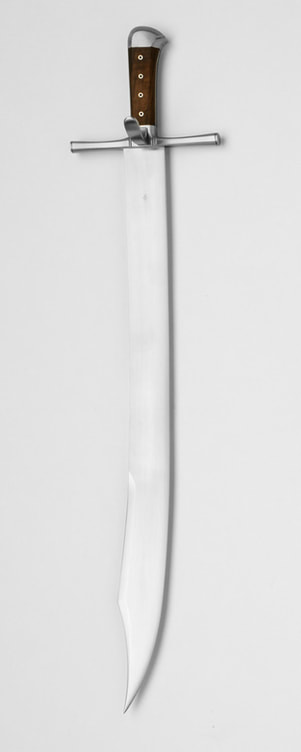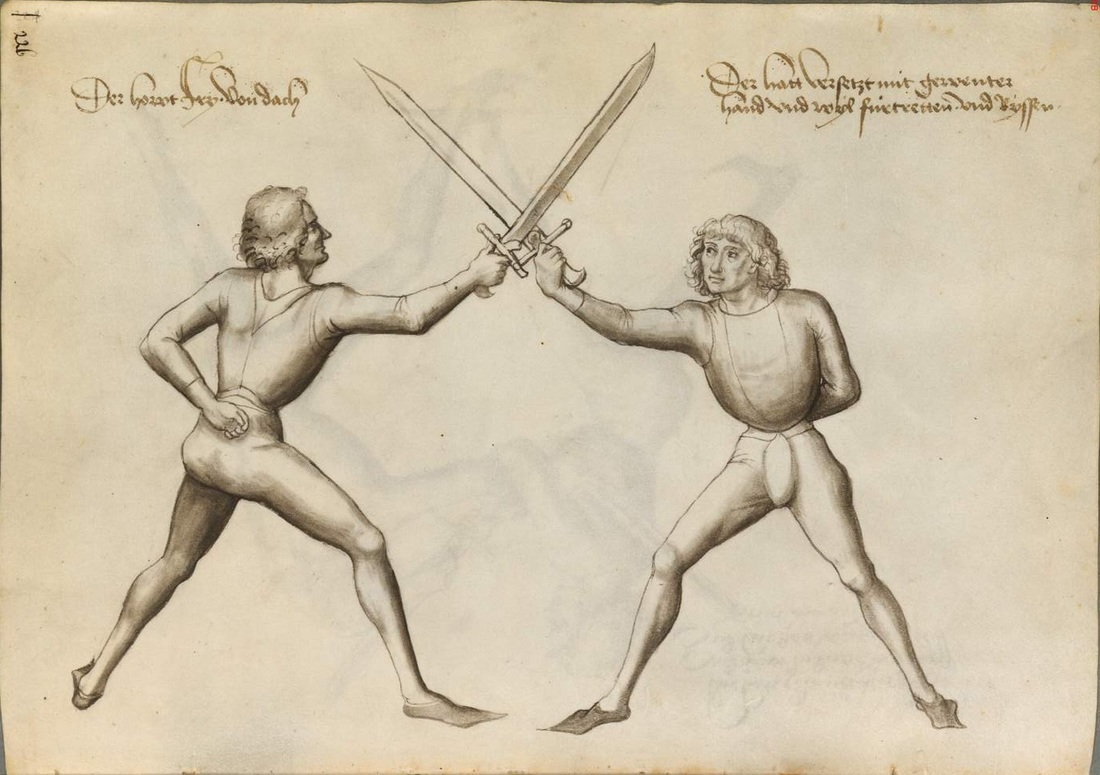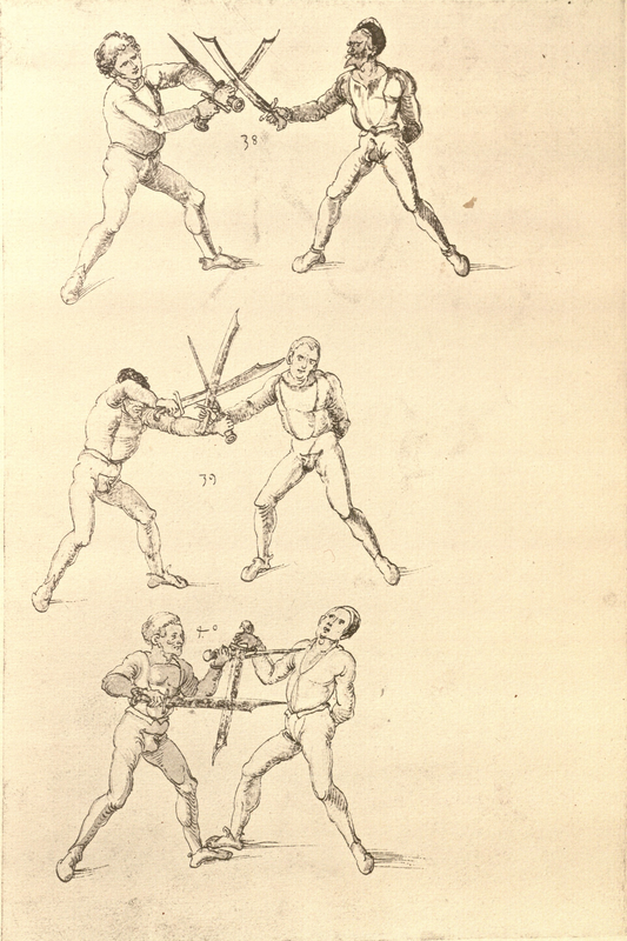THE MESSER

Its name simply means ‘knife’ in English, and denotes a single-edged weapon used for delivering powerful cuts, deep slices and strong thrusts.
It is not a true sword, instead belonging to a sub-class of bladed weapons used extensively by the lower social classes from the 14th century onwards.
Perhaps the most unusual feature is the addition of a third axis on the cross guard, known as the Nagel, or ‘nail’. This is potentially the earliest example of the evolution towards complex hilts designed to protect the unarmoured hand against an opponent’s blade.
Many variations exist, ranging greatly in length, breadth and blade form. The typical messer used at the HSD is the Langesmesser (‘Long Knife), which features a clipped point, a broad blade of no more than 36 inches and a weight of around 2lbs.
Key primary sources used at the HSD for Messer include:
Cod. Pal. Germ. 430 and Cgm. 582, written by Johannes Lecküchner in 1478 and 1482 respectively
MS E.1939.65.341 (colloquially known as The Glasgow Fechtbuch), written anonymously around 1505 but containing earlier material
MS 1825 and CGM 1507 (known as the Paulus Kal Fechtbuch), written in 1467 and 1470 respectively
Cod.I.6.4.2 (known as Codex Wallerstein), compiled in 1556 by Paulus Hector Mair but having been from an early anonymous author dated between 1400 and 1470.


Find medieval combat sources and much more by visiting the excellent Wiktenauer HEMA resource portal